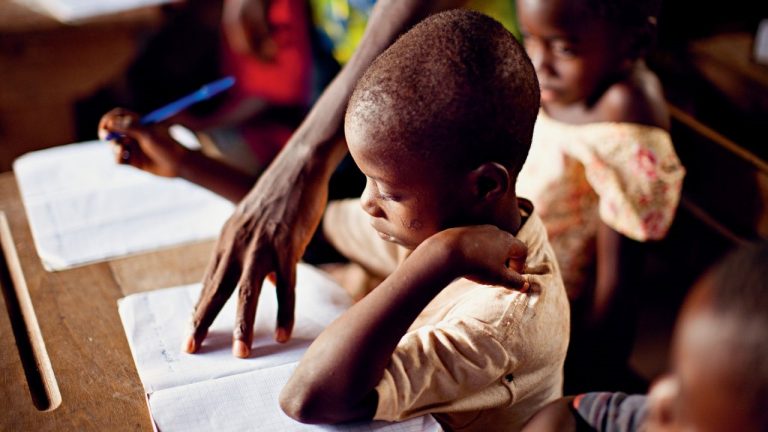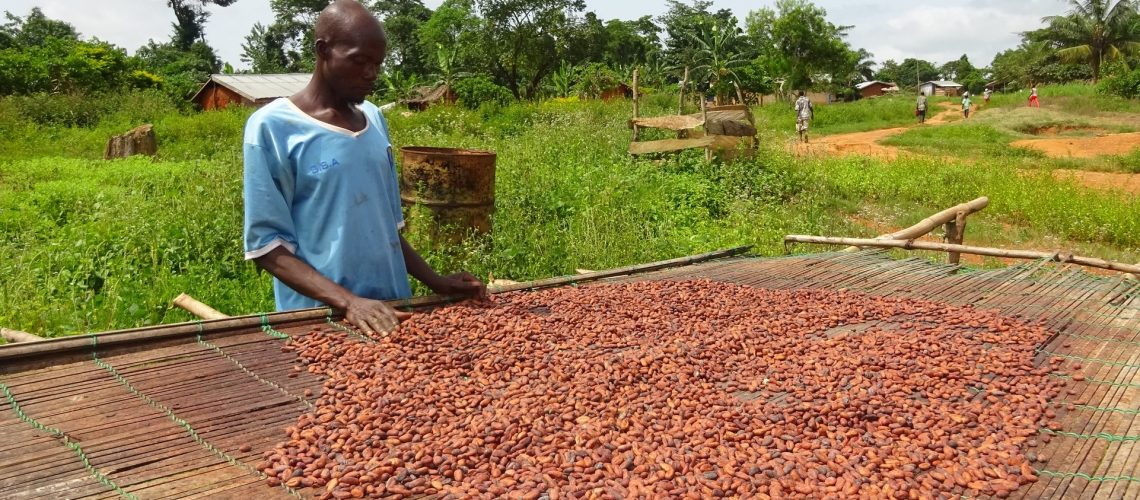Despite an agreement with Ghana on a more remunerative price for farmers, Côte d’Ivoire is unable to maintain the price of its cocoa. The pandemic and sluggish demand are not helping, but the manufacturers are also playing their part.
Putting aside their usual competition, Ghana and Côte d’Ivoire, which account for two-thirds of the world’s cocoa production, agreed in 2019 to influence prices and collect more than the 6 to 8% of the cocoa business that usually goes to producing countries. The two initiators of what some call the Cocoa Opec have in doing so created the LID, the ‘living income differential’, intended to better remunerate the farmers. This is a sum of 400 dollars (328.70 euros) per tonne in addition to the London price, which the manufacturers had agreed to pay from the 2020/2021 production year.
But behind the scenes, some large companies were very proactive in their efforts to avoid paying this differential. It was the American company Hershey, owner of the Reese’s and Rolo brands, that set the ball rolling. For its December 2020 supplies, Hershey had bought more than 250,000 tonnes of beans on the InterContinental Exchange (ICE) of the New York Stock Exchange and not, as usual, from producing countries or traders. This manoeuvre enabled it to avoid paying the negotiated LID, since the beans in question had been produced before the agreement came into force. This circumvention immediately angered the Ivorian and Ghanaian regulators, the Ivorian Coffee and Cocoa Council (CCC) and the Ghana Cocoa Board (Cocobod), who briefly suspended the sustainability programmes and threatened to withdraw their licences from the Hershey-controlled companies, before the latter definitively endorsed the principle of paying the living income differential and the sanctions were lifted.
Stocks are rising in Côte d’Ivoire…
However, not all is well for the LID. With overproduction linked to a drop in demand following the coronavirus pandemic – the International Cocoa Organisation, ICCO, expects a surplus of 100,000 tonnes for the 2020/2021 season[i] – the living income differential is turning against Ivorian cocoa, which is no longer finding buyers. Harvested beans have been stored for months in the cooperatives’ warehouses. Reuters estimated that in January 100,000 tonnes of beans were stuck on farms and in cooperatives, representing about a third of Côte d’Ivoire’s monthly production at that time of the year. [ii]
In order to continue selling to the subsidiaries of the six multinationals in Côte d’Ivoire (Barry Callebaut, Cargill, Ecom, Olam, Sucden and Touton), the Conseil Café-Cacao has had to reduce its origin differential by $400 per tonne or 220 FCFA per kilo, “which several observers are commenting on as a forced repayment of the LID on the origin price.“ [iii] The National Cocoa Association of Côte d’Ivoire (GNI) has called on the CCC to end the domination of these six multinationals over Côte d’Ivoire’s exports.
The so-called ‘pisteurs’ took advantage of the circumstances to offer farmers to buy their produce at between 650 and 850 FCFA/kg. Thousands of farmers who thought their situation would improve after the Ivorian authorities set the farm gate price at 1000 FCFA have seen their hopes dashed, a situation that has revived cocoa smuggling between Côte d’Ivoire and Ghana, where farmers can sell their beans for 850 to 900 FCFA per kilo. [iv]
… and the share of Ivorian cocoa in stocks in Europe and the US is declining
However, the decline in global demand is not the only cause of the poor sales of Ivorian cocoa and the low prices paid to farmers. The share of Ivorian cocoa in the futures markets in Europe and the US is falling. ICE Futures Europe stocks fell by 43% between October and the end of February, with the share of Ivorian cocoa falling from 17% to 13%, while the share of Nigerian cocoa increased from 12% to 25% and that of other origins remained stable at 3%. The trend was similar in the United States, this time against a backdrop of increasing stocks. Ivorian cocoa now accounts for only 55% of ICE Futures US-certified stocks compared to 75% in October. [v] For one trader interviewed by CommodAfrica: “This drop in Côte d’Ivoire volumes continues to be explained by the application of the Living Income Differential (LID). Ivorian certified stocks have been consumed over the months since the LID was implemented.” [vi]
However, Michel Arrion, director of the ICCO, repeats over and over again that world cocoa prices are far too low: “There will be no answer to the problems of cocoa sustainability in West Africa without an increase in world prices. (…) $2,000 a tonne is a third of the cocoa prices of forty years ago. If we integrate all these costs, we arrive at a price that is about what it was forty years ago.” [vii]
[i] ICCO, Cocoa Market Report, January 2021.
[ii] Ange Aboa, Ivory Coast faces 100,000-tonne cocoa bean pile-up as demand slows, Reuters, 13 January 2021.
[iii] Côte d’Ivoire : Les 6 multinationales exigent du CCC des réductions massives de prix pour acheter 100 000 tonnes de cacao aux mains des exportateurs ivoiriens, Abidjan.net, 21 February 2021.
[iv] Espoir Olodo, Côte d’Ivoire : regain de la contrebande de cacao dans l’Est, Agence Ecofin, 16 March 2020.
[v] ICCO Monthly Cocoa Market Report – February 2021.
[vi] CommodAfrica, Chute du cacao de Côte d’Ivoire dans les stocks certifiés des marchés à terme, 18 March 2021.
[vii] Claire Fages, Pour être durable, le cacao devrait être payé trois fois plus cher, selon l’ICCO, RFI, 26 February 2021.
Copyright photo: TDC
Also read

Cocoa in Côte d’Ivoire: child labor on the increase during lockdown
According to a report by the International Cocoa Initiative (ICI)*, child labor in Côte d’Ivoire’s cocoa sector increased during the lockdown brought about by the COVID-19 pandemic.


